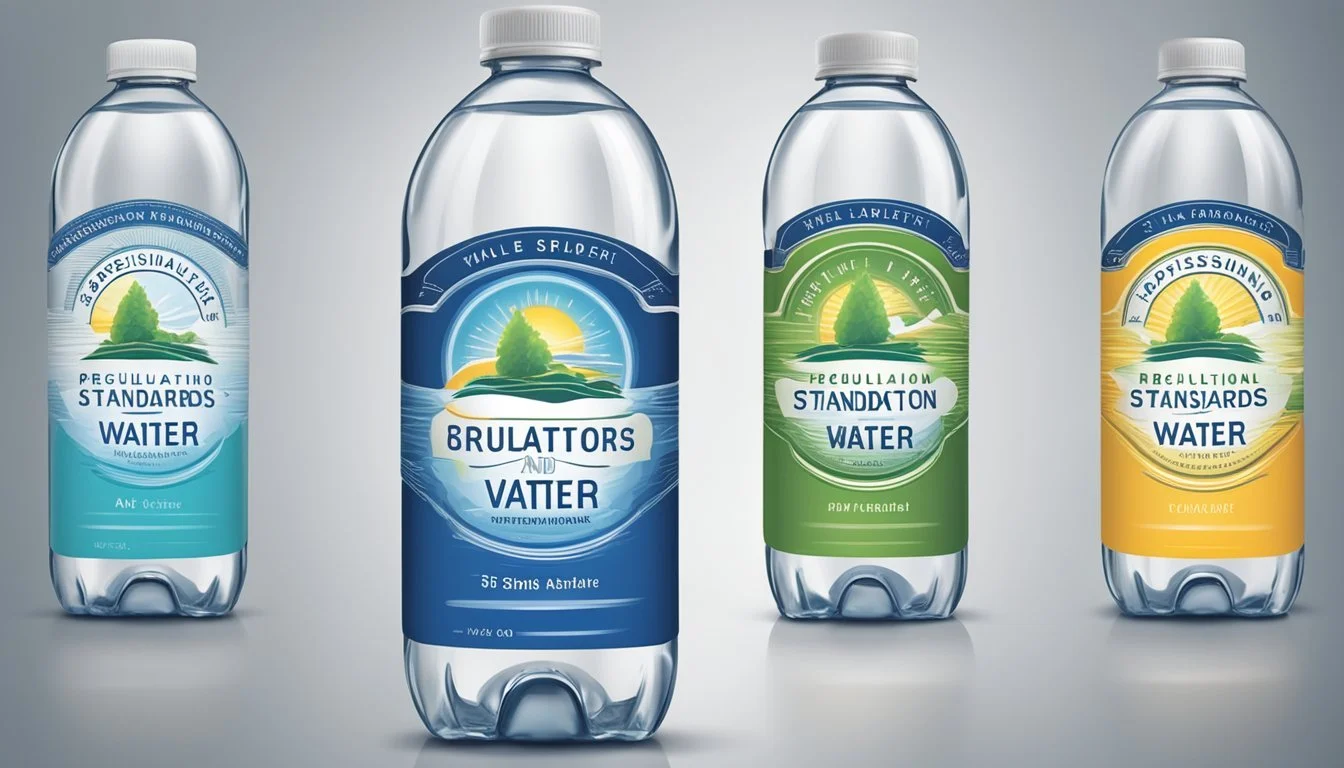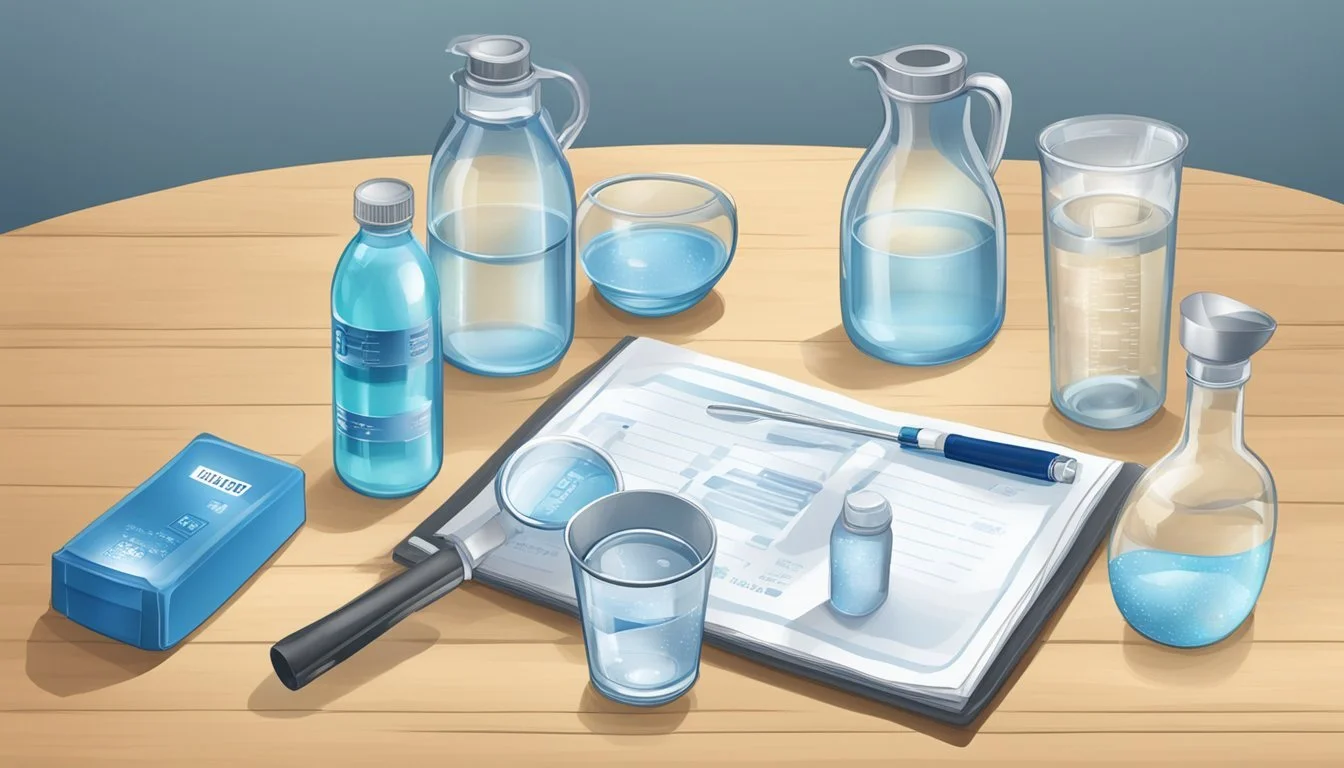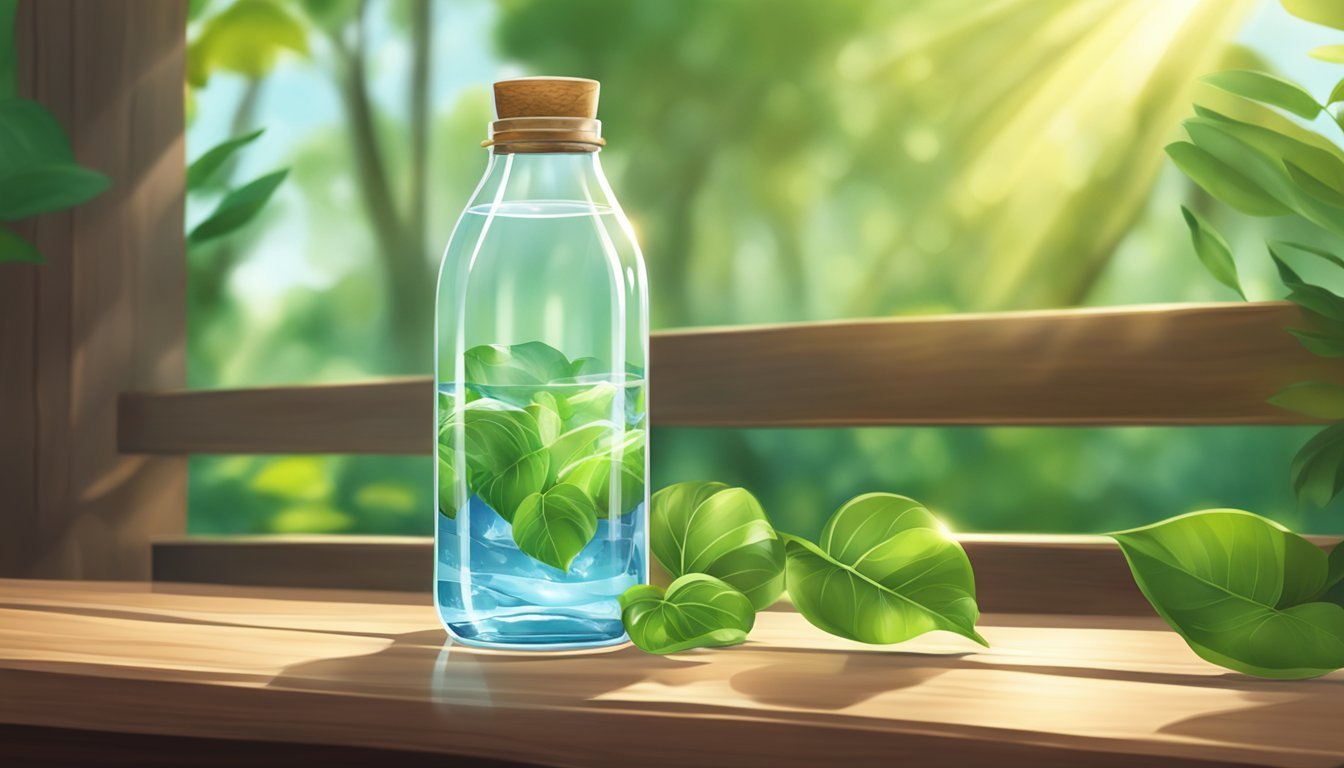Is The Well the Best Bottled Water?
A Pure and Sustainable Hydration Choice
The Well bottled water offers a premium alkaline water option for health-conscious consumers. This brand focuses on delivering pure, great-tasting water through sustainable practices. The Well's alkaline water is crafted to provide optimal hydration and taste, with a pH level designed to support overall wellness.
The company was founded in 2017 by water enthusiasts concerned about tap water quality and plastic pollution. The Well uses reusable glass bottles for their products, addressing environmental concerns associated with single-use plastics. Their flagship store in Corona del Mar, California offers refills and delivery services, making it convenient for customers to access their preferred water source.
The Well's commitment to quality extends beyond taste. They emphasize the purity of their water, which may appeal to those seeking alternatives to tap water or other bottled brands. While premium bottled water options often come at a higher price point, many consumers find the investment worthwhile for perceived health benefits and superior taste.
Origin and Sources of Bottled Water
Bottled water comes from two primary sources: natural springs and municipal water supplies. The type of source impacts the water's mineral content, taste, and marketing appeal.
Natural Sources
Well water, spring water, and mineral water originate from underground aquifers. These sources often contain naturally occurring minerals that give the water a distinct flavor profile. Artesian well water comes from confined aquifers under pressure, forcing water to the surface without pumping.
Spring water bubbles up naturally to the earth's surface. Companies collect it directly at the spring or through boreholes. Mineral water must contain a minimum level of dissolved solids and comes from geologically and physically protected underground sources.
Some bottled water brands source from lakes and rivers. This surface water undergoes extensive filtration and treatment to ensure safety and quality before bottling.
Municipal Sources
Many popular bottled water brands use treated tap water as their source. Municipal water undergoes rigorous testing and treatment to meet safety standards. Bottled water companies often further purify this water through processes like reverse osmosis or distillation.
Dasani, for example, sources its water from local municipal supplies across the United States. The company then adds minerals for taste. This practice allows for consistent quality and flavor across different regions.
Using municipal sources can be more cost-effective and environmentally friendly than transporting water from distant springs. However, some consumers prefer the perceived purity of natural spring sources.
Regulation and Standards
Bottled water in the United States is subject to strict regulations and standards set by federal agencies to ensure safety and quality. These regulations cover production processes, contaminant levels, and labeling requirements.
EPA and FDA Oversight
The Environmental Protection Agency (EPA) regulates public drinking water systems through the Safe Drinking Water Act. The Food and Drug Administration (FDA) oversees bottled water as a packaged food product. FDA regulations for bottled water must be at least as stringent as EPA standards for tap water.
Bottled water companies must follow Current Good Manufacturing Practices (CGMPs) specific to water processing and bottling. These practices include regular testing for contaminants and maintaining sanitary conditions. The FDA sets legal limits for over 90 contaminants in bottled water, including microorganisms, disinfectants, and organic and inorganic chemicals.
Bottlers must also provide accurate and truthful labeling. Labels must include the water source and treatment methods used. Consumer Confidence Reports are required annually for public water systems but not for bottled water.
International Standards
Many countries have established their own standards for bottled water regulation. The Codex Alimentarius Commission, a joint program of the World Health Organization and Food and Agriculture Organization, provides international guidelines for bottled water standards.
The European Union has strict regulations for natural mineral waters and spring waters. These regulations cover source protection, exploitation, and bottling conditions. Many countries follow similar frameworks, adapting them to local conditions and requirements.
International bottled water associations, such as the International Bottled Water Association (IBWA), promote industry standards and best practices globally. These organizations often work with governments to develop and implement effective regulations.
Health and Safety Concerns
Well bottled water can contain various contaminants that pose potential health risks. These include physical particles, harmful chemicals, and disease-causing microorganisms.
Physical Contaminants
Microplastics are tiny plastic particles that can enter well water through environmental pollution. These particles may leach chemicals and harbor bacteria. Sediment and debris can also contaminate wells, especially after flooding or improper well construction.
Regular testing and filtration are crucial to remove physical contaminants. Activated carbon filters effectively reduce microplastics and sediment. Well owners should inspect their water regularly for clarity and unusual particles.
Chemical Contaminants
Wells can contain harmful chemicals from natural sources or human activities. Common chemical contaminants include:
Arsenic
Lead
Copper
Nitrates and nitrites
Heavy metals
These substances can cause serious health issues, including cancer, kidney damage, and developmental problems in children. Regular water testing is essential to detect chemical contaminants.
Treatment options vary based on the specific chemicals present. Reverse osmosis systems remove many chemical contaminants effectively. Ion exchange and activated alumina are useful for specific contaminants like arsenic.
Biological Contaminants
Bacteria, viruses, and parasites can contaminate well water, causing waterborne diseases. E. coli and Giardia are common biological contaminants. These pathogens often enter wells through surface water runoff or damaged well casings.
Signs of biological contamination include:
Cloudy or discolored water
Unpleasant taste or odor
Gastrointestinal symptoms after consumption
Disinfection methods like chlorination or UV treatment effectively eliminate most biological contaminants. Regular well maintenance and proper construction help prevent contamination. Boiling water can serve as a temporary solution during suspected contamination events.
Environmental Impact
Bottled water production and consumption have significant environmental consequences. The industry's reliance on plastic and energy-intensive processes contributes to pollution, waste, and climate change.
Plastic Usage and Recycling
The bottled water industry generates massive amounts of plastic waste. In 2021, it produced 600 billion plastic bottles globally, with 85% likely ending up in landfills. This staggering figure highlights the urgent need for improved recycling practices.
Plastic bottles take hundreds of years to decompose, polluting ecosystems and harming wildlife. Marine environments are particularly vulnerable, as discarded bottles often make their way into oceans and waterways.
Recycling efforts face challenges due to low participation rates and contamination issues. In 2017, only 8.4% of plastic in the United States was recycled, indicating a significant gap between production and responsible disposal.
Carbon Footprint of Bottled Water
The carbon footprint of bottled water extends beyond plastic production. Transportation, packaging, and refrigeration all contribute to greenhouse gas emissions.
Producing and transporting bottled water requires significant energy. The process involves extracting water, treating it, bottling, and shipping to retailers. This energy-intensive chain results in higher carbon emissions compared to tap water.
Refrigeration in stores and homes further increases the environmental impact. The electricity used to cool bottled water adds to its overall carbon footprint.
Studies estimate that bottled water's carbon footprint is up to 3,500 times higher than tap water. This stark difference underscores the environmental cost of choosing bottled over tap water.
Taste and Aesthetic Factors
Taste and aesthetic factors play a crucial role in the perception and acceptance of bottled water. These elements encompass flavor, odor, color, and mineral content, which significantly influence consumer preferences.
Flavor Profile of Different Water Types
Still water typically has a neutral taste, while sparkling water offers a crisp, effervescent sensation. Mineral water can have subtle flavor notes due to its dissolved mineral content.
Hard water may have a slightly metallic taste from high calcium and magnesium levels. Soft water, in contrast, tends to have a smoother, more neutral flavor profile.
Some bottled waters are infused with natural or artificial flavors to enhance their taste appeal. These can range from subtle fruit essences to more pronounced flavors like cucumber or mint.
Impact of Minerals on Taste
Mineral content significantly influences water taste and mouthfeel. Calcium contributes a slightly sweet taste, while magnesium can impart a bitter note.
Sodium and potassium affect water's saltiness. Higher mineral content generally results in a more distinct flavor, which some consumers prefer for its perceived health benefits.
Low mineral content water, often achieved through reverse osmosis, has a very neutral taste. This can be appealing to those who prefer a "pure" water experience.
Carbonation in sparkling water not only adds texture but can also enhance the perception of mineral flavors. It creates a slight acidity that some find refreshing.
Comparative Analysis
The Well bottled water can be evaluated against other water sources and purification methods to understand its unique qualities and benefits.
Bottled Water vs. Tap Water
Bottled water like The Well often undergoes more rigorous purification processes than tap water. Municipal water treatment plants focus on removing harmful contaminants but may leave some trace elements. The Well likely uses advanced filtration techniques to remove a wider range of impurities.
Tap water contains residual chlorine for disinfection, while bottled water typically does not. This affects taste and odor. The Well may have a more neutral flavor profile as a result.
Mineral content varies between bottled and tap water. The Well could offer a consistent mineral composition, whereas tap water's mineral levels fluctuate based on source and treatment methods.
Water Filtration and Purification Methods
The Well likely employs multi-stage filtration systems. These may include carbon filtration to remove chlorine and organic compounds, and microfiltration to eliminate bacteria and particulates.
Reverse osmosis is a common method used in bottled water production. This process removes up to 99% of dissolved solids, producing extremely pure water. The Well may utilize this technology.
Some bottled water brands add minerals back after purification. The Well could enhance its water with beneficial minerals like magnesium and calcium to improve taste and provide nutritional value.
UV sterilization is another technique often used in bottled water production. This method effectively eliminates microorganisms without altering water chemistry or taste.
Consumer Information
Bottled water consumers can take steps to ensure their hydration choices are safe and informed. Understanding water quality issues and exploring various options for safe drinking water empowers individuals to make the best decisions for their health and preferences.
Identifying Water Quality Issues
Consumers can check bottled water labels for information on the water source and type. Many brands provide water quality reports, which detail contaminants and treatment processes. The Environmental Working Group's Tap Water Database offers insights into local water quality, helping consumers compare bottled options to their tap water.
For those concerned about specific contaminants, independent testing can provide clarity. Home water testing kits are available, or consumers can send samples to certified laboratories. The Safe Drinking Water Hotline offers guidance on testing procedures and interpreting results.
Options for Safe Hydration
Bottled water is one of several hydration choices available to consumers. Stores offer a variety of brands and types, including spring, purified, and mineral waters. Each has distinct characteristics and potential benefits.
Reusable water bottles paired with home filtration systems present an eco-friendly alternative. These can be filled with tap water treated by pitchers, faucet-mounted filters, or under-sink systems. Such options often prove more cost-effective in the long run.
For those preferring tap water, reviewing their local Consumer Confidence Report can provide assurance about quality. These annual reports detail water sources, treatment methods, and test results for various contaminants.
Special Considerations
Certain populations face higher risks from contaminated water. Historical incidents have also raised concerns about long-term impacts of water pollution on communities.
Populations at Higher Risk
Children, pregnant women, and immunocompromised individuals are more vulnerable to waterborne contaminants. Young children can be especially susceptible to nitrates and lead in drinking water. Pregnant women need to be cautious of mercury and other heavy metals that can harm fetal development.
People with weakened immune systems face greater danger from pathogens like Giardia and Cryptosporidium. These microscopic parasites can cause severe gastrointestinal illness. E. coli bacteria also pose heightened risks for vulnerable groups.
Rural areas often rely on private wells that may go untested for years. Regular water quality testing is crucial for potentially affected communities.
Impacts of Historical Water Contaminations
The Flint, Michigan water crisis highlighted the devastating effects of lead contamination. Children exposed to lead can suffer lifelong cognitive impairments. PFAS, known as "forever chemicals," have emerged as a widespread concern.
PFOA and PFOS are two common types of PFAS linked to cancer and other health issues. A U.S. Geological Survey study found PFAS in 45% of tap water samples nationwide. These chemicals persist in the environment and human body for years.
Some communities continue to grapple with the legacy of industrial pollution in their water supplies. Ongoing monitoring and remediation efforts are essential to protect public health.
Market Trends and Considerations
The bottled water industry continues to experience significant growth and evolution. Consumer preferences, economic factors, and technological advancements shape the market landscape.
Pricing and Economic Factors
Bottled water prices vary widely based on brand, source, and packaging. Premium brands can command higher prices, often positioning themselves as luxury products. The global bottled water market reached $303.95 billion in 2022 and is projected to grow at a 5.9% CAGR through 2030.
Economic conditions impact consumer purchasing decisions. During economic downturns, some consumers may opt for tap water or lower-priced brands. However, concerns about water quality drive continued demand even in challenging economic times.
Manufacturing costs, including packaging and transportation, influence pricing strategies. Companies invest in efficient production methods to maintain competitive pricing while meeting quality standards.
Innovation in Bottled Water Industry
Bottled water companies continually innovate to differentiate their products. Enhanced waters with added vitamins, minerals, or flavors cater to health-conscious consumers. Functional waters targeting specific health benefits have gained popularity.
Packaging innovations focus on sustainability. Biodegradable bottles and reduced plastic usage address environmental concerns. Some brands introduce alternative packaging materials like aluminum cans or boxed water.
Smart packaging technologies, such as QR codes for product information or interactive labels, enhance consumer engagement. These innovations also improve supply chain traceability and product authenticity.
Water sourcing innovations include advanced filtration methods and sustainable extraction practices. Companies invest in water conservation technologies to address environmental concerns and ensure long-term resource availability.







